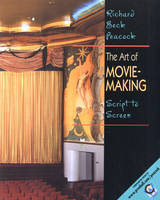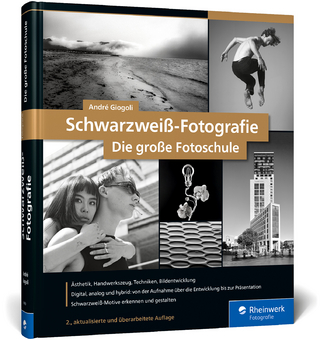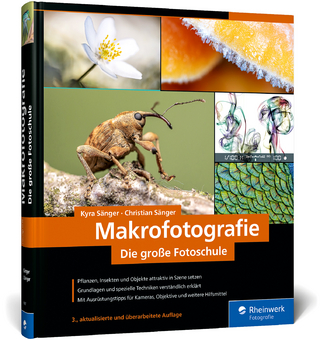
The Art of Movie Making
Pearson (Verlag)
978-0-13-087942-4 (ISBN)
- Titel ist leider vergriffen;
keine Neuauflage - Artikel merken
For courses in Introduction to Film.
This text presents the study of film in an innovative new structure, one that emphasizes the interplay of three frequently conflicting elements: Art, Technology, and Business. Illustrating how movies are created from the beginning (the script writing stage) to the end (marketing and distribution), the text lays the foundation for understanding the practical technique, the specialized language, and, most importantly, an aesthetic appreciation of motion pictures. The strength of this text is that it gives the student a realistic understanding of how the process of filmmaking works, along with a greater sense of the informed and skillful choices that its artists and technicians make in creating their art.
Preface.
1. Cinema Art, Film Technology, and the Movie Industry.
The Magic of Movies. The Move Environment. Film Literacy. Movies as Mirrors. Movies as Myth. A Team Act. But is it Art?. Background: The Old Hollywood. The Business of Moviemaking Today. Summary. The Producer: Gail Katz Interview. Films to Consider. Though Questions and Exercises. Further Reading.
I. THE PREPRODUCTION PHASE.
2. The Script.
The Role of the Screenwriter. The Work of the Screenwriter. The Mechanics of Script Writing: Designing the Scene. Screenplay Structure. The Nature of Story Conflict. Characterization. Dialogue. Finding the Theme. Film Genre. Story Sources: The Differing Codes of Cinema and Literature. Writing Considerations: Finding the Voice. Points of View. The Influence of the Director. Summary. The Screenwriter: Buck Henry Interview. Films to Consider. Thought Questions and Exercises Relating to Screenwriting. Further Reading.
3. The Look.
The World of the Movie. Background: The Sophistication of Design. The Work of the Production Designer. Starting Off. The Design Team. Design Environments. Shooting Sites. Delineating Characters. Designing with Color. A Case Study: The Rocketeer. Summary. The Production Designer: Patricia Norris Interview. Films to Consider. Thought Questions and Exercises Relating to Production Design. Further Reading.
4. Casting the Performers.
The Criteria. Background: The Star System. Story-Driven vs. Star-Driven Movies. What Makes a Star? Casting Against Type. Casting Support Roles. The Demands of Acting. Types of Acting Styles. Finding the Character. Playing the Scene. Text and Subtext. Case Study: Fatal Attraction—“The Restaurant Scene”. Summary. The Casting Director: Pam Dixon Mickelson Interview. Films to Consider. Thought Questions and Exercises. Further Reading.
II. THE PRINCIPLE PHOTOGRAPHY STAGE.
5. The Director.
The Art of Storytelling on Film. Background: The Rise of the Auteur. The Work of Directing. Styles of Directing. Resumes of Current Directors. The Impact of International Directors. Auteurs Working in American Movies Today. Summary. The Director: Vondie Curtis-Hall Interview. Films to Consider. Thought Questions and Exercises. Further Reading.
6. The Art of Technique.
On the Set. The Nature of a Shot. Shot Characteristics. Frame Composition. Reading the Frame. A Fundamental Shot Series. Camera Movement. Special Effects: Sandra Ford Karpman Interview. Films to Consider. Thought Questions and Exercises. Further Reading.
7. The Cinematographer.
Making Pictures. Background: The Evolving Art of Cinematography. Working with Directors. The Cameras. Lighting. Aesthetics of the Camera. Color. A Case Study: Don't Look Now. Summary. The Cinematographer: Bill Pope Interview. Films to Consider. Thought Questions and Exercises. Further Reading.
III. THE POSTPRODUCTION PHASE.
8. The Editor.
The Art of Editing. The Central Role of Editing. Background: The Art of Editing Evolves. The Director/Editor Relationship. The Skills of Editing. The Aesthetics of Editing. Editing Movement. Editing Endings. The Work of Editing. Summary. The Editor: Carol Littleton Interview. Films to Consider. Thought Questions and Exercises. Further Reading.
9. Sound Design.
The Nature of Sound in Film. Background: The Changing Technology of Film Sound. The Uses of Sound in Movies. The Spoken Word. Music. The Stages of Music Production for Film. Aesthetics of Film Music. Sound Effects. The Final Mix. Summary. The Composer: Mark Isham Interview. Films to Consider. Thought Questions and Exercises. Further Reading.
10. Marketing and Distribution.
Finding the Audience. Patterns of Movie Distribution. The Major Distributors: Mainline Hollywood. Marketing Research. Background of the Rating System. Advertising and the Media. The Selling of Movies. The Future of Motion Picture Delivery Systems. Overseas Markets: The Globalization of American Film. American Independent Producers and Distributors. Critical Responses. Summary. The Film Critic: Peter Travers Interview. Films to Consider. Thought Questions and Exercises. Further Reading.
Appendix I: Student Writing.
A List of Probes. Some Writing Hints. Sample of a Student Paper.
Appendix II: The Scene Structure of a Movie: Fatal Attraction.
Glossary.
Index.
| Erscheint lt. Verlag | 2.3.2001 |
|---|---|
| Sprache | englisch |
| Gewicht | 948 g |
| Themenwelt | Kunst / Musik / Theater ► Film / TV |
| Kunst / Musik / Theater ► Fotokunst | |
| Kunst / Musik / Theater ► Theater / Ballett | |
| Sachbuch/Ratgeber ► Freizeit / Hobby ► Fotografieren / Filmen | |
| Geisteswissenschaften ► Sprach- / Literaturwissenschaft ► Literaturwissenschaft | |
| ISBN-10 | 0-13-087942-8 / 0130879428 |
| ISBN-13 | 978-0-13-087942-4 / 9780130879424 |
| Zustand | Neuware |
| Haben Sie eine Frage zum Produkt? |
aus dem Bereich


